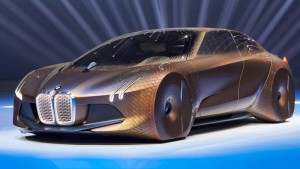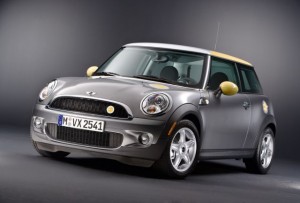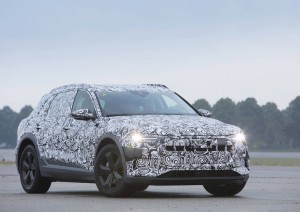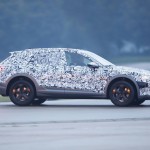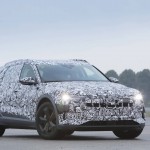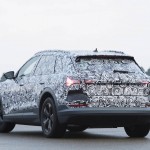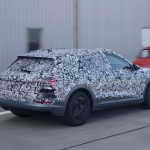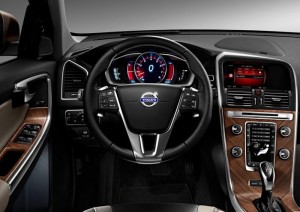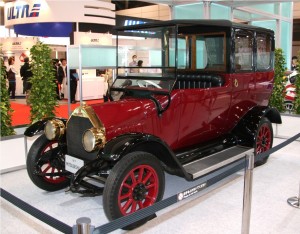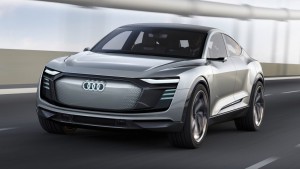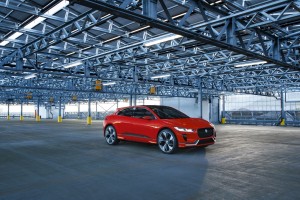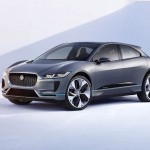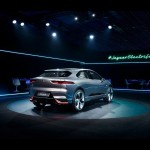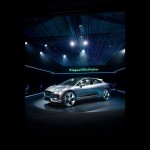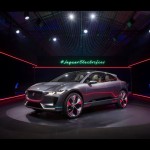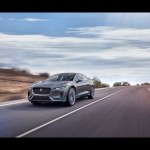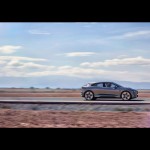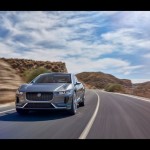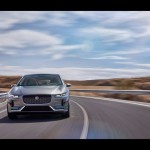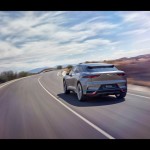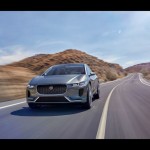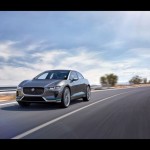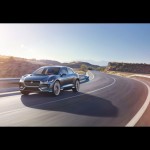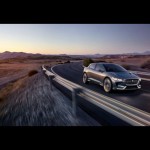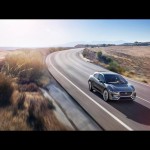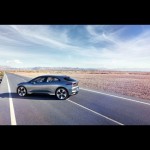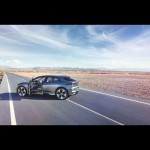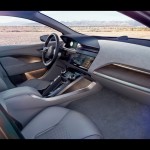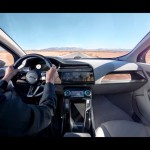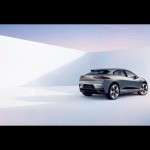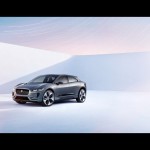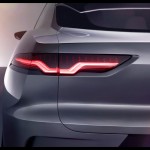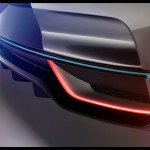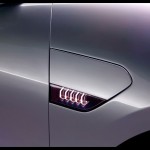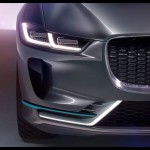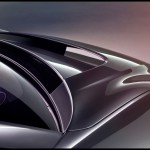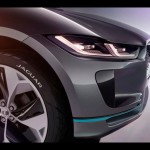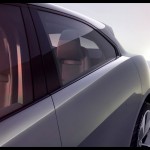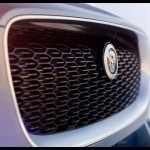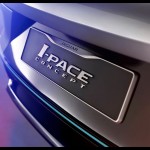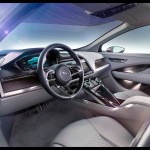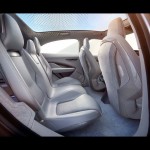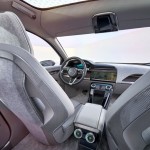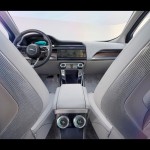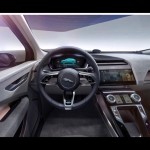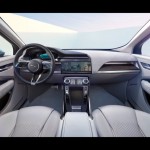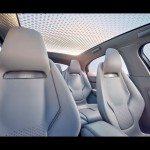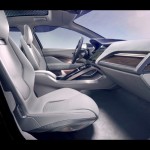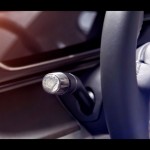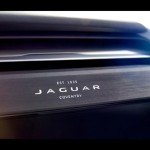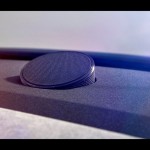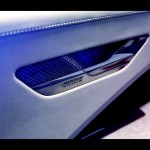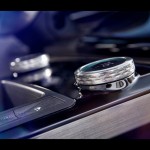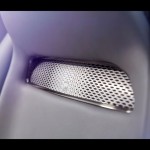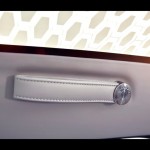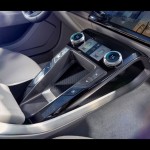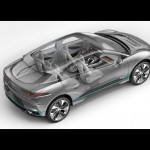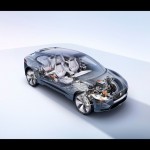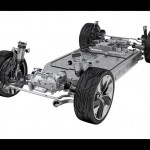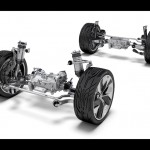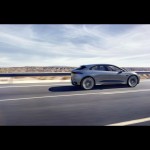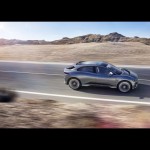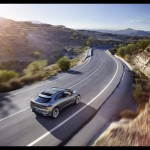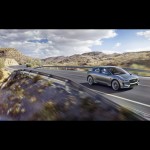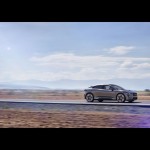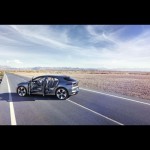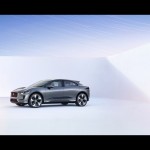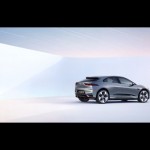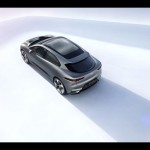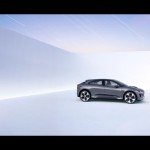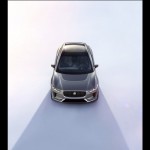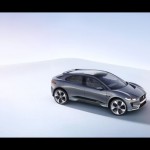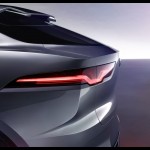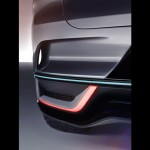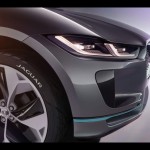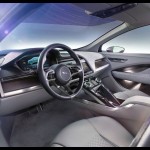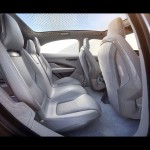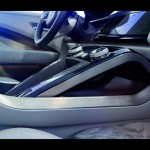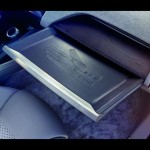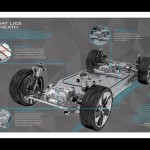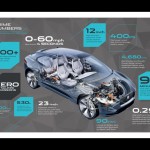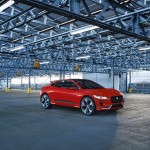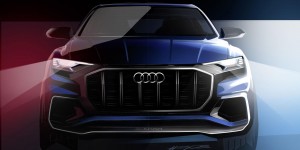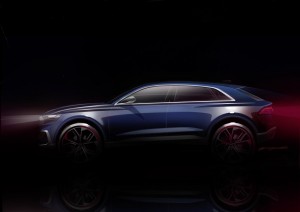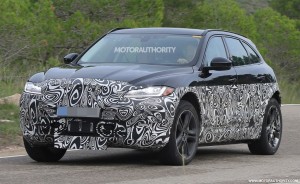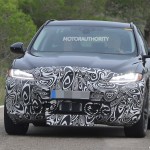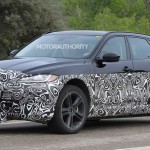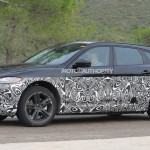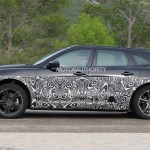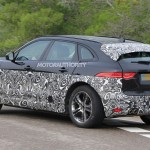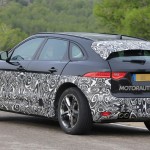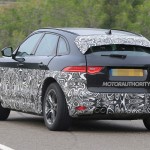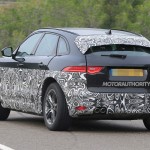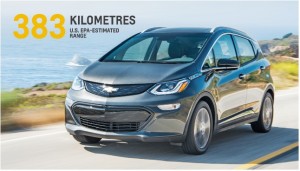Tag Archives: electric
BMW Electric Crossover To Feature Level 3 Autonomy
We don’t know what BMW’s upcoming electric crossover will be called, but what we do know is that it will arrive with a level 3 autonomy. So, whether or not it’s called the i5, iNext, or something else, the BMW electric crossover has the ability to bring the level 3 autonomy to fruition, which will revolutionize the auto industry.
The SAE International defines level 3 autonomy as “conditional automation.” Basically, it means the car can take over the whole driving mechanics and functions as long as the driver is in the car and ready to take command of the vehicle once required. Unlike level 1 or level 2 autonomy, the human driver can take his eyes off the road under level 3, as well as relax a bit because he doesn’t have to handle the steering wheel either.
The driver would be able to text, make a call, or even read a book under this level 3 autonomy. However, he will be alerted if he needs to intervene and take over the car. It will be the system’s responsibility to decide if it cannot function under the current conditions.
Kevin Marcotte, BMWi’s national manager in Canada, told InsideEVs that the German automaker’s use of level 3 autonomy in its electric crossover is the “next big thing for us in terms of leapfrogging the industry.” It will be a “major leap” for the autonomous driving technology.
For years, there have been rumors that the German automaker is working on a new electric vehicle—a crossover, some said. The reports about BMW’s use of level 3 autonomy means that any doubts can be put to rest. There is indeed an electric crossover from BMW and although we aren’t sure yet what it’s going to be called, we have a little tidbit in the form of level 3 autonomy.
BMW recently announced its shift to electronic vehicles, including that it’s calling the iNext that will introduce a number of new technologies. Apparently, that will be released in 2021 while the i8 roadster will debut next year. A Mini BEV is reportedly going to be launched in 2019 and the all-electric XBMW X3 will be unveiled in 2020.
The Electric Mini Hardtop Has Been Confirmed For 2019
In 2019, Mini will launch an electric version of its Hardtop. The brand finally confirmed the kind of body style the electric vehicle, which it has been working on since October, will have on Tuesday. This marks the fact that Mini is truly serious about dabbling into electric vehicles.
According to the source, the electric Mini Hardtop will be built at the brand’s plant in Oxford in United Kingdom instead of the earlier assumption that it would be produced in mainland Europe because of what happened with Brexit. But for the electric powertrain, its components would be from factories located in Germany.
Oliver Zipse, the BMW Group’s head of production, highlighted the need to use multiple plants for the diversification of the brand. It also allows for the production to be flexible, depending on the demand for the electric cars in the future.
Mr Zipse takes pride in Mini’s “adaptable production system,” which will be able to react instantaneously to the changing demands of the customers. When there is an increase in demand for the Hardtop’s electric version, it will be easier for Mini to boost the production of its components.
Mini is no stranger to mainstream electric cars. In fact, it used to lease a Mini E electric car, which was based on the Hardtop, on a trial basis. Whatever the feedback was from that leased electric car, it looked to be positive because it acted as a research tool for Mini to allow it to work on the future of its e-vehicles.
Mini’s lineup for electric vehicles will use a plug-in hybrid technology, much like the BMW. Currently, the Cooper S E ALL4 is using the hybrid tech already, and it is expected to be fitted in the rest of the Mini’s range of cars.
This move by Mini only showed how confident the brand is in moving to a more electrified future. The brand expects that hybrids, plug-in hybrids, and pure electrics will account for 15 to 25 percent of the company’s sales by 2025.
4 Things To Expect From The 2019 Audi e-tron Quattro
During the 2015 Frankfurt Auto Show, we have seen a concept form of what would be Audi e-tron Quattro. These spy shots are to be considered a treat after more than a year of waiting for any glimpse of the e-tron Quattro prototype. This all-electric production car will compete directly with the Tesla Model 3, a celebrated electric vehicle currently making waves in the US’ electric car market.
1. Exterior
When it comes to its appearance, the 2019 Audi e-tron Quattro did not deviate much from the concept form. Don’t get us wrong, the actual prototype looked better, thanks to a chiseled front grille that has a cleaner facade and a front and rear with “futuristic” LED lights. The sizing and proportions remain true to a crossover segment and thus confirm the same size we saw on the concept.
The roof is designed to be similar to a coupe, but that’s where it stops because Audi is planning to release a Sportback a year after the launch of this car.
2. Interior
Reports are pointing out that the cabin of the e-tron Quattro will be very similar to the new A8. That means we can expect horizontal lines, a futuristic ambiance, and multiple touchscreens. Since the new A8 promised to use autonomous-driving technologies, the e-tron Quattro should follow its lead and further expand on this self-driving technology.
3. Powertrains
The first versions of the e-tron Quattro will use one electric motor in the front and two in the rear. It would have an output of 429 horsepower. There is no word yet on the range of the e-tron Quattro but based on the concept, it should be able to reach 310 miles on one cycle. In the months following the release, there should be an option for an entry-level model with one motor at the front and one at the rear, as well as a more powerful version.
4. Pricing and release date
The e-tron Quattro should sell around $80,000. Unlike previous reports, it won’t be called the Q6 and would also be launched sometime next year with a US market release in late 2018.
Volvo To Offer Only Electrified Powertrains In The Future
Volvo is joining the rest of the European car manufacturers in steering the auto industry towards an electrified future. The company announced on Wednesday that it will only offer electrified powertrains starting in 2019, completing phasing out the internal combustion engine from its lineup.
According to Autonews, Volvo CEO Hakan Samuelsson said in a statement that the announcement comes on the heels of the manufacturer’s plans to sell one million electrified cars by 2025. “When we said it[,] we meant it. This is how we are going to do it.”
Back in 2014, Volvo revealed plans of offering a plug-in hybrid alternative alongside versions of its traditional gasoline and diesel-powered engines. The company CEO explained that the move will allow Volvo to “stand out” from their competitors.
Henrik Green, Volvo’s research and development head, told the source that vehicles powered only by a combustion engine would be phased out from the company’s lineup between 2023 to 2025. That’s a long way from now, but it seems to look doable under Volvo’s current plan.
Between 2019 and 2021, Volvo plans to offer five cars from its full-electric lineup. The company presently has nothing in this department, but the next years will prove challenging for the car manufacturer as it shifts away from the use of combustion engine.
Three of the planned full-electric vehicles will come from Volvo while the remaining two cars planned will be produced by Polestar, which parent company Volvo plans to transform into a stand-alone brand for high-performance electric vehicles.
Electrified Technology is on the Rise
Volvo’s electrified models will be manufactured in its factories in Europe, China, and the United States. Although heftier in investment costs, Samuelsson told Reuters this will be shouldered by the company’s existing budget.
The switch towards an electrified future is a move well-recognized in Europe, where analysts ave been predicting the rise in electronic technology by 2020. Aside from Volvo, its competitors Renault and the Volkswagen Group are also offering hybrid technology.
A number of key European cities may also be banning the use of diesel engines, but the cost of an after-treatment systems to make diesel comply to new emissions regulations may not be worth the investment.
1917 Mitsubishi Model A Will Get Electric Car Treatment
Mitsubishi Motors, formerly the Mitsubishi Shipbuilding Company, entered the automotive scene when it produced its first passenger vehicle, which is the 1917 Mitsubishi Model A. In celebration of the company’s centennial anniversary, it announced that it will release a plug-in version of the car.
Looking back at the history of the prestigious brand, the Model A was a four-door sedan measuring 103.9 inches in wheelbase, 150.8 inches long, 63.8 inches wide and 81.5 inches high. It has a curb weight of 2,899 lbs. The car carried a 2,765 cc inline-four engine with 35 hp and top speed of up to 97 km/h.
The car was produced from 1917 to 1921 and only 22 of them were made for customers. Due to the expensive production of the vehicle, Mitsubishi halted its production and it was not until 1960 when the company resumed its passenger car production with the Mitsubishi 500.
According to Inside EVs, the 1917 Mitsubishi Model A with plug-in hybrid powertrain is currently being made by West Coast Customs in Burbank, California. It is expected to be launched in summer. The progress of the car specialists will be shown during an episode of Inside West Coast Customs on the Velocity network.
The source said the revived Model A will make use of the automaker’s PHEV platform. Currently, the Mitsubishi Outlander makes use of the platform.
The PHEV platform is an interesting choice for the new Model A as it should be noted that the classic passenger car is actually as big as the common sport utility vehicles of today’s standards. It is worth mentioning that the Outlander is actually 105.1 inches in wheelbase, 184.8 inches long, 71.3 inches wide and 66.1 inches high. The curb weight of the auto is 3,768 lbs.
The integration of the PHEV platform with the 1917 Model A is truly an exciting feat for West Coast Customs as it will highlight both the past and present of the brand in one vehicle.
Top 3 Features of the Audi E-Tron Unveiled at 2017 Shanghai Auto Show
Not to be outdone by its major German rivals like Mercedes-Benz and BMW, Audi just unveiled its own electric-powered concept car at the 2017 Shanghai Auto Show. The vehicle is called the e-tron Sportback concept.
The new concept car gives everyone a preview of what to expect from the future crossover coupe models of Audi. It embodies their next evolution in styling, technology and power.
Here are the top 3 features of the Audi e-tron Sportback concept based on its maker’s official website:
1. Exterior
The e-tron offers sporty lines and muscular body in its exterior. Then it is fitted with 23-inch six-spoke 3-D wheels. The measurements of the auto is similar to the Audi A7.
The concept car is further highlighted by futuristic-looking headlamps and taillamps. Even the logo of the auto in its nose is illuminated by LED lights. The lighting system of the vehicle is capable of projecting images in the road to communicate with drivers and pedestrians. Examples of those are a braking indicator or zebra crossing projection. It uses digital animation to do those.
2. Interior
The interior of the concept vehicle is highlighted by Audi’s signature luxurious leather treatment. It is also adorned by high-resolution touchscreens providing information on navigation and other functions of the auto.
3. Power Unit
The e-tron is powered by a 95 kWh Lithium-ion battery pack and three electric motors. The output of the car totals 320 kW, or even up to 370, according to Audi. That allows the vehicle to sprint from zero to 100 km/h in just 4.5 seconds.
The battery of the concept car is capable of covering a distance of 500 km at full charge. Its maker claimed that it can get an 80% charge in just 30 minutes using a fast DC charger.
Photos
Check out the official photos of the Audi e-tron Sportback concept in the gallery below:
Video
Here is a video of the Audi e-tron Sportback concept during its introduction:
6 Quick Facts About the Jaguar I-Pace
The Jaguar I-Pace finally makes it to the 2017 Geneva Motor Show. Although the electric vehicle is still in its concept form, the photos and information released about it were great so far.
Check out the 6 quick facts about the new Jaguar I-Pace here based on a source:
1. Debut
The I-Pace Concept first appeared at the 2016 Los Angeles Auto Show. It marks its arrival in Europe at the 87th Geneva Motor Show.
2. Power Unit
The electric sport utility vehicle is powered by two 200hp electric motors. The power units generate a total of 400 hp and 516 lb-ft of torque. The output lets the auto accelerate from zero to 60 mph in just four seconds.
The EV is equipped with liquid-cooled 90 kWh battery with cells from LG Chem. The battery pack allows the SUV to cover a range of more or less 220 miles from a full charge.
The I-Pace also features at least 50 kWh DC fast charging with CCS Combo that takes it to 80 percent charge in just 90 minutes and full charge at around two hours. Jaguar offers an optional 7 kW home charging point too for the convenience of its customers.
3. Exterior
The Jaguar concept EV retained its look when it was introduced in LA last year. The auto resembles the shape of the Tesla Model X but with the styling elements found in the Jaguar F-Pace.
The I-Pace is 184 inches long and 74.4 inches wide. This time, the I-Pace comes in photon red paint finish similar to the image shown above.
4. Interior
The I-Pace offers a lot of space in its cabin thanks to the low positioning of its battery on the front and rear axle. The vehicle has a five-seating capacity. Again, the interior mirrors many things found in the F-Pace.
5. Tech
The notable tech features within the I-Pace include a 12-inch touchscreen, 5.5-inch touchscreen for infotainment and climate control, Wi-Fi hotspot plus improved connectivity for onboard and smartphone apps.
6. Photos
Check out the official photos of the Jaguar I-Pace in the gallery below:
3 Major Facts About The 2019 Audi Q8 SUV
Audi is now ready to replace the Q7 with a new flagship called the Q8, which will be the SUV equivalent of an A8. According to Audi, the Q8 is so sporty that “many of its design elements are reminiscent of the Audi Ur-Quattro of the 1980s.”
That’s a huge claim, considering that the Audi Quattro was such a legend in the auto industry until today.
Spacious Interior
According to a report, Audi will introduce the Q8 in the coming Detroit Auto Show to showcase its spacious interior that has four “equally comfortable seats.” That happens despite sporting a flat roof line. Speaking of exterior design, the Audi Q8 will come packed with its brand’s octagonal grille, which is now wider than ever and positioned forward compared to the current models. The C-pillar is flat but very wide, and is accompanied by flared shoulders above the wheels.
If you want to imagine how the Audi Q8 will look like, think about the BMW X6M but with more space inside.
MLB Evo Platform
Down the line, you will probably see an RS variant of the Audi Q8. If that happens, it will be formed based on the Audi-developed MLB Evo Platform. It packs a twin-turbo V-8 engine that was designed by Porsche though linked to a ZF transmission. We may also find the SQ7’s 4.0-liter TDI and electric turbocharger combination in the Q8.
If a plug-in hybrid version ever arrives, you will see a V6 TDI that can churn out 30 miles of electric driving.
No Fully Electric Q8 Yet
There was a rumor last year that Audi will introduce a fully electric Q8. That wasn’t sure yet, though, after the R8 e-tron was discontinued because of a lack of sales. If you want an all-electric car, you can check out the A9 in 2020. The fully electric Q8 is still possible, no worries. After all, Audi’s sales need to represent 15% EVs.
Top 3 Expectations About The 2019 Jaguar I-Pace
The Jaguar I-Pace electric SUV concept was unveiled during the Los Angeles Auto Show last week. Days after, a test mule for the production version has been spotted and reviews and speculations are in order.
Although this wasn’t the first time the test mule was spotted in the wild, this one was different since the production design seems to be final. The launch, according to reports, will be somewhere in the middle of 2018 with this being a 2019 model.
1. New Platform
The test mule used the body of an F-Pace SUV, though Jaguar said this was not the same platform that will be used for the production version of the I-Pace. The front design has the usual grille opening, which design is far different from the one we see on the F-Pace. There are also no air vents on either side of the bumper anymore. The wheelbase was stretched, the track was widened and the roof has been lowered.
The platform that will be used on the I-Pace will have the “skateboard” design. This will allow the battery to sit in the floor and power the electric motors on both axles. The production of the I-Pace will be in a different plant from the F-Pace, probably at the Magna Steyr of Australia.
2. Electric Power
The I-Pace will feature a 90-kilowatt-hour lithium-ion battery paired with two 200-horsepower electric motors that has a range of up to 220 miles. Reports said that the I-Pace can go 0-60 mph in just 4 seconds.
Rivals of the I-Pace include the Tesla Model S, an upcoming electric vehicle from Mercedes-Benz, and the possible electric version of the next-generation Audi S7.
3. Pioneer in Jaguar
Jaguar just announced that its diving into a series of vehicles with mild hybrid, plug-in hybrid and electric flavors. Along with its sister company Land Rover, Jaguar will be focusing on heralding a new breed of sedans for the environment-conscious consumers. Land Rover will focus on the hybrids while Jaguar is working on the electric vehicles.
Chevrolet Released Pricing For 2017 Bolt EV
It looks like Chevrolet is keeping up its promise to offer the 2017 Bolt EV at an affordable price as it recently announced an MSRP of $37,495, including destination charge. This is rather cheap considering the Bolt EV has an EPA-rated 238 miles on a full charge.
Also, depending on individual tax situations, customers may even receive a federal tax credit of up to $7,500 for a net value of $29,995. Alan Batey, president of GM North America and leader of Global Chevrolet, said that “value” is the hallmark for Chevrolet and their offering of an affordable Bolt EV proves their intent of letting their customers access an electric vehicle with plenty of range.
According to reports, Bolt EV buyers can expect range, cargo space, technology and safety features that all come standard in this vehicle with crossover proportions. Bolt EV is considered a smart buy for any customer, thanks to its dependable performance and sales and service support from a nationwide network of Bolt EV certified Chevrolet dealers.
With the Bolt EV, you’re not only saving on fuel and saving the environment at the same time, you’ll also be getting well-appointed equipment and features.
The Bolt EV is offered in the standard but well-equipped LT trim, which has a starting price of $37,495. It comes with a wide array of features such as Regen on Demand™ steering wheel paddle, rear vision camera, 10.2-inch diagonal color touch screen and MICHELIN™ Self-sealing tires (in certain circumstances). The top of the line is the Premier, which features all the equipment in the LT trim plus leather-appointed seats, front and rear heated seats, surround camera and rear camera mirror.
The pricing released includes the destination and freight charges, but excludes taxes, title, license and dealer fees. Select dealerships across the US are expected to start offering the 2017 Bolt EV by late this year.

